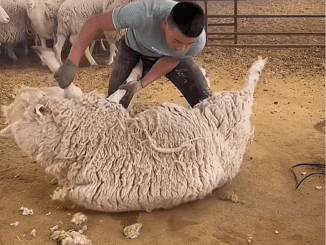In the world of tableware, few processes are as fascinating as the creation of unique, handcrafted plates. Beyond mere dishware, these plates are art forms, combining traditional craftsmanship with modern techniques that make each piece one-of-a-kind. Let’s take a closer look at how this extraordinary manufacturing process unfolds, capturing artistry that’s hard to believe.


1. The Journey Begins: Selecting Premium Materials
The creation of unique plates begins with the meticulous selection of raw materials. The finest clay, minerals, and pigments are sourced from different parts of the world to ensure the best quality. Often, manufacturers use custom blends of clay that allow for specific textures, resilience, and color potential. This customization ensures that each plate has its own character and quality from the very first step.
2. Handcrafted Molding and Shaping Techniques
Unlike mass-produced plates, which rely heavily on machines, each plate here is shaped by hand or with limited machine assistance. Master artisans mold each piece on a potter’s wheel, ensuring the final product carries the personal touch of its creator. Some artisans may use molds, but these molds are unique, designed specifically for individual collections or even single plates. As a result, slight variations in shape and size create a bespoke feel to each item.


3. Unconventional Designs Through Artisan Techniques
What sets these plates apart are the extraordinary designs achieved through unconventional methods:
- Raku Firing: This ancient Japanese technique involves removing the plate from the kiln while it’s still red-hot, then placing it into a container of combustible materials. This process produces unique crackling and variations in glaze.
- Smoke Firing: Plates undergo a smoke-firing process where they’re exposed to wood chips or straw to create a smoky pattern on the plate. The result is an unpredictable design that makes every plate a visual delight.
- Marbling and Pigment Dripping: For vibrant designs, artisans pour and manipulate multiple pigments to create intricate, marbled effects. This technique allows the color to “dance” over the plate, with no two patterns ever being identical.
4. The Intricate Glazing Process
The glazing stage is one of the most crucial in achieving a plate’s final look and texture. Unique glazing methods, including hand-painting and splattering, allow for vibrant color combinations. Some manufacturers use reactive glazes, which create unpredictable colors and textures when exposed to high temperatures in the kiln. The glaze can crackle, swirl, or mix with other pigments to form breathtaking, one-of-a-kind finishes.
5. Multiple Kiln Firings and Precision Temperatures
While traditional plates are fired once or twice, these unique plates may go through up to four or five kiln firings. Each firing is done at specific temperatures to achieve unique effects in texture and color. In certain processes like crystalline glazing, precise temperature control allows for beautiful crystals to form on the plate’s surface, giving it a gem-like finish. These firing techniques bring out colors and effects that are impossible to replicate through any other method.


6. Final Touches: Hand-Polishing and Detailing
Once the firing is complete, each plate is individually inspected and hand-polished to remove any imperfections. Some plates receive gold, silver, or copper accents through a delicate gilding process. Hand-painted details may also be added for a final touch, enhancing the uniqueness of the piece. For some artisans, even microscopic designs are painted onto the plate edges, a detail that elevates each piece to an art form.
7. Sustainability and Ethical Production
The production of these plates is as sustainable as it is unique. Many manufacturers use eco-friendly materials, sustainable kilns, and recycled pigments. Unlike fast-production tableware, each plate here represents slow craftsmanship, supporting artisans and the environment alike.
Final Product: A Masterpiece in Every Plate
The result of this labor-intensive, creative process is more than just a plate – it’s a masterpiece. Each one tells its own story, carrying marks of the artisans’ hands and the unpredictable beauty of the natural elements it encountered. No two plates are identical, making them highly coveted by collectors and art lovers alike.




A Tribute to Art and Utility
In today’s age of mass production, these unique plates remind us of the beauty and value of handmade items. Whether used as tableware or displayed as decorative art, they bring a rare blend of utility and beauty, embodying the true spirit of craftsmanship. The next time you hold one of these plates, you’ll be holding a piece of art that’s as unique as a fingerprint – the culmination of skill, passion, and tradition in every inch.


